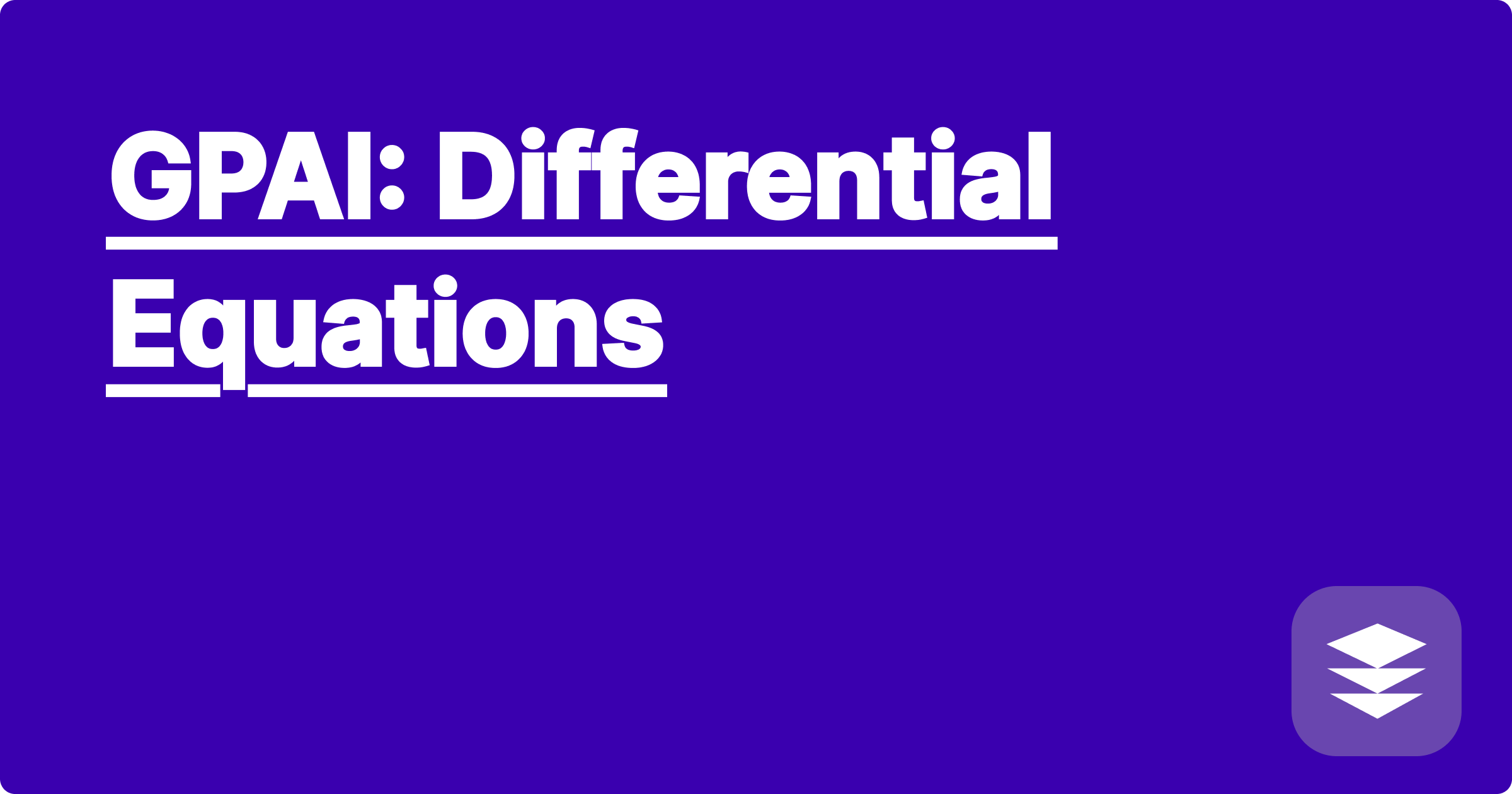
The world of STEM is rife with complex challenges, many of which involve understanding and solving differential equations. These equations, which describe the relationship between a function and its derivatives, are fundamental to modeling dynamic systems across physics, engineering, biology, and even economics. Traditional methods for solving differential equations can be time-consuming, computationally intensive, and often require specialized mathematical expertise. Fortunately, the rise of generative pre-trained AI (GPAI) offers a powerful new toolkit for tackling these challenges, opening up exciting possibilities for STEM students and researchers.
For STEM students, mastering differential equations is often a critical hurdle in their academic journey. Researchers, too, rely on these equations to model complex phenomena and develop innovative solutions. The ability to leverage AI tools effectively can significantly enhance both learning and research productivity. By understanding how GPAI can assist with solving and analyzing differential equations, students can gain a deeper understanding of the underlying concepts and researchers can accelerate their work, freeing up time for more creative exploration and discovery. This shift towards AI-augmented problem-solving represents a paradigm shift in STEM education and research, offering unprecedented opportunities for advancement.
Differential equations describe how systems change over time or space. They are essential for modeling a wide range of phenomena, from the motion of a pendulum to the spread of a disease. These equations involve functions and their derivatives, representing rates of change. The order of a differential equation is determined by the highest-order derivative present. For example, a first-order differential equation involves only the first derivative, while a second-order equation involves the second derivative. Solving a differential equation means finding the function that satisfies the equation and any given initial conditions. There are various types of differential equations, including ordinary differential equations (ODEs), which involve functions of a single independent variable, and partial differential equations (PDEs), which involve functions of multiple independent variables. The complexity of solving these equations can vary significantly depending on the type and order of the equation.
AI tools like ChatGPT, Claude, and Wolfram Alpha offer powerful capabilities for working with differential equations. ChatGPT and Claude can provide step-by-step solutions, explain underlying concepts, and even generate code for numerical solutions. Wolfram Alpha, with its robust computational engine, can handle symbolic and numerical solutions for a wide range of differential equations, including complex systems. These tools can be used for various tasks, including verifying solutions obtained through traditional methods, exploring the behavior of solutions under different parameters, and tackling equations that are difficult or impossible to solve analytically. By leveraging the strengths of each tool, STEM students and researchers can significantly enhance their understanding and efficiency in working with differential equations.
To solve a differential equation using an AI tool, start by clearly defining the problem. This includes stating the equation itself, along with any initial or boundary conditions. For example, you might input "Solve the differential equation y' + 2y = x, with y(0) = 1". Next, select the appropriate AI tool. For symbolic solutions and exploration, Wolfram Alpha is often a good choice. For step-by-step explanations and code generation, ChatGPT or Claude can be more suitable. Input the problem into the chosen tool, ensuring accurate syntax and notation. Review the output carefully, paying attention to the solution provided, any assumptions made, and potential limitations. For complex problems, it can be beneficial to cross-verify the results using different tools or traditional methods.
Consider the simple first-order differential equation dy/dx = ky. Using Wolfram Alpha, you can input "solve dy/dx = ky" and obtain the general solution y = Ce^(kx), where C is an arbitrary constant. If you have an initial condition, such as y(0) = 10, you can input "solve dy/dx = ky, y(0) = 10" to get the specific solution y = 10e^(kx). As a more complex example, consider the second-order equation d²y/dt² + ω²y = 0, which describes simple harmonic motion. Inputting this into Wolfram Alpha yields the general solution y = A cos(ωt) + B sin(ωt), where A and B are constants determined by initial conditions. These examples demonstrate the power of AI tools for quickly obtaining both general and specific solutions to differential equations.
Another example involves using ChatGPT to understand the steps involved in solving a homogeneous linear differential equation. You can ask ChatGPT to "Explain how to solve a homogeneous linear differential equation of the form ay'' + by' + cy = 0." ChatGPT will then provide a detailed explanation involving the characteristic equation and its roots, leading to the general solution. This can be invaluable for learning the underlying principles.
Integrating AI tools effectively into STEM education and research requires a strategic approach. Don't rely solely on AI for solutions. Instead, use these tools to enhance understanding and accelerate the problem-solving process. Focus on understanding the underlying mathematical concepts and the steps involved in solving differential equations. Use AI tools to verify your work, explore different approaches, and tackle more complex problems. Develop a strong foundation in traditional methods before relying heavily on AI. This will enable you to critically evaluate the output of AI tools and identify potential errors or limitations. Furthermore, explore the different strengths of each AI tool. Wolfram Alpha excels in symbolic computations, while ChatGPT and Claude are better suited for explanations and code generation.
To conclude, GPAI offers powerful new avenues for tackling the challenges of differential equations in STEM. By understanding how to use these tools effectively, students and researchers can significantly enhance their learning and research productivity. Start by experimenting with simple examples, exploring the capabilities of different AI tools, and focusing on developing a deep understanding of the underlying mathematical concepts. Embrace the power of AI to unlock new possibilities in your STEM journey.